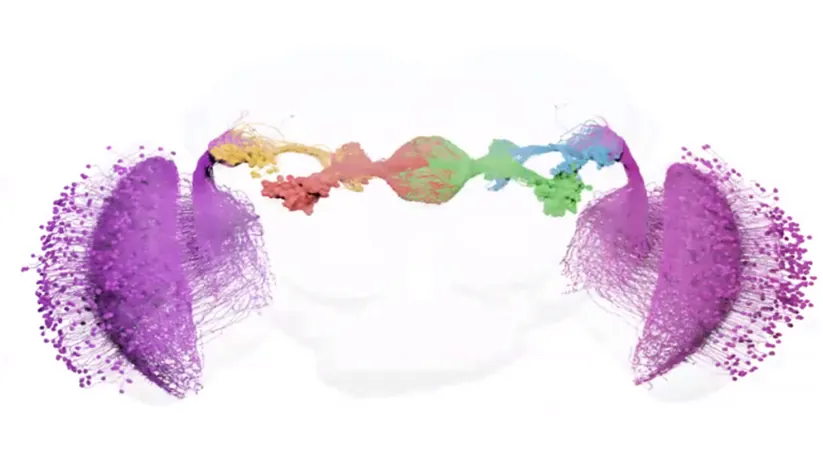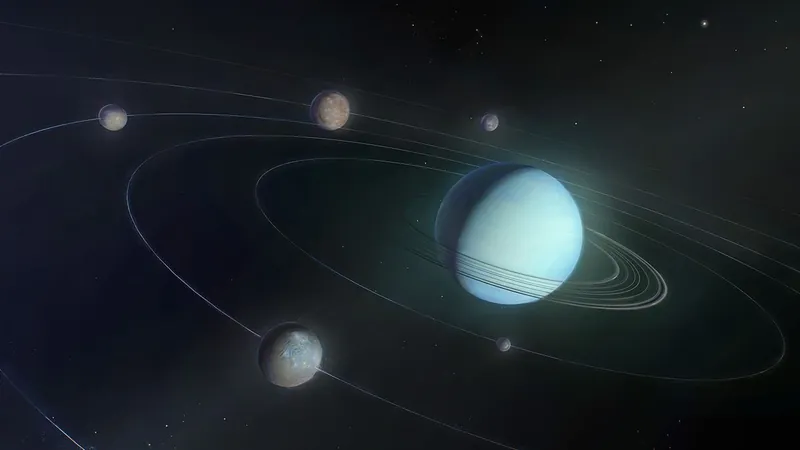
Unlocking the Secrets of Navigation: How Fruit Flies Map Their World!
2024-10-07
Author: Wei Ling
Introduction
In a groundbreaking study, neuroscientists at UC Santa Barbara have reconstructed the entire anterior visual pathway of the fruit fly—an intricate network that connects the insect’s eyes to its brain's navigation center. This remarkable feat, achieved with the aid of artificial intelligence and rigorous human analysis, reveals the relationships between over 3,000 unique neurons in extraordinary detail.
Significance of the Research
This pivotal research is part of a larger collection of nine studies published in the prestigious journal Nature, charting the neuronal wiring of the entire fruit fly brain. Spearheaded by leading researchers from Princeton University, including Mala Murthy and Sebastian Seung, this monumental achievement marks the most comprehensive mapping of a brain to date. Such intricate detail is expected to deepen our understanding of animal cognition and may even provide clues about the wiring of the human brain.
The Challenge of Neural Interactions
The study’s co-author, systems biologist Sung Soo Kim, emphasizes the complexity of neural interactions: “In systems neuroscience, we explore how neurons communicate to enable perception, cognition, and motor commands. However, deciphering the precise connections among neurons has always been a considerable challenge.”
Responses to Sensory Stimuli
Indeed, when an organism encounters a sensory stimulus—like a touch or pressure—the neural response can be drastically altered by various factors such as mood and context. Kim explains how a simple pressure on the skin triggers myriad reactions along the neural pathways, resulting in a multitude of possible responses in the brain.
Fruit Fly Navigation
In the case of navigation—an essential behavior for survival—fruit flies rely on approximately 50 specialized “compass neurons” located within the donut-shaped ellipsoid body of their brains. These neurons not only process information from the eyes but also integrate sensory cues to help guide their movement effectively. The straightforward structure of a fruit fly's brain makes it an ideal model for studying how visual information is transformed into navigational decisions.
Innovative Research Methodology
The study utilized advanced methods developed at the Janelia Research Campus of the Howard Hughes Medical Institute, where scientists captured 21 million electron microscope images of a single fruit fly's brain. Researchers at Princeton then employed AI to identify and reconstruct the brain's neural networks in 3D form. However, human verification was essential to refine this complex data. Justin Garner, a co-lead author from Kim’s lab, was tasked with meticulously proofreading the AI-generated results, focusing specifically on the anterior visual pathway.
Discoveries in Neural Functionality
“It was astonishing to visualize the detailed structure of individual neurons,” Garnet remarked. He discovered several parallel pathways, each comprised of similar neuron types yet exhibiting differences in their functions.
Predictions and Explorations
The researchers made significant predictions regarding the visual responses of these neurons. For instance, some neurons are attuned to vertically elongated objects, akin to the pillars of a Greek temple, while others respond to more compact, circular forms. They are also exploring the color sensitivity of the “ring neurons,” which play a crucial role in translating visual data into directional sense.
Broader Implications
This in-depth mapping of neural connectivity promises to inspire new computational models that could provide insights into animal navigation—and potentially aid in the development of autonomous vehicle technologies that navigate without GPS.
Conclusion
The implications of this research extend well beyond the world of insects; understanding the fruit fly's brain may eventually unlock fundamental truths about navigation in complex organisms, including humans. As we dive deeper into the mysteries of the brain, who knows what other revelations await us? Stay tuned!



 Brasil (PT)
Brasil (PT)
 Canada (EN)
Canada (EN)
 Chile (ES)
Chile (ES)
 España (ES)
España (ES)
 France (FR)
France (FR)
 Hong Kong (EN)
Hong Kong (EN)
 Italia (IT)
Italia (IT)
 日本 (JA)
日本 (JA)
 Magyarország (HU)
Magyarország (HU)
 Norge (NO)
Norge (NO)
 Polska (PL)
Polska (PL)
 Schweiz (DE)
Schweiz (DE)
 Singapore (EN)
Singapore (EN)
 Sverige (SV)
Sverige (SV)
 Suomi (FI)
Suomi (FI)
 Türkiye (TR)
Türkiye (TR)